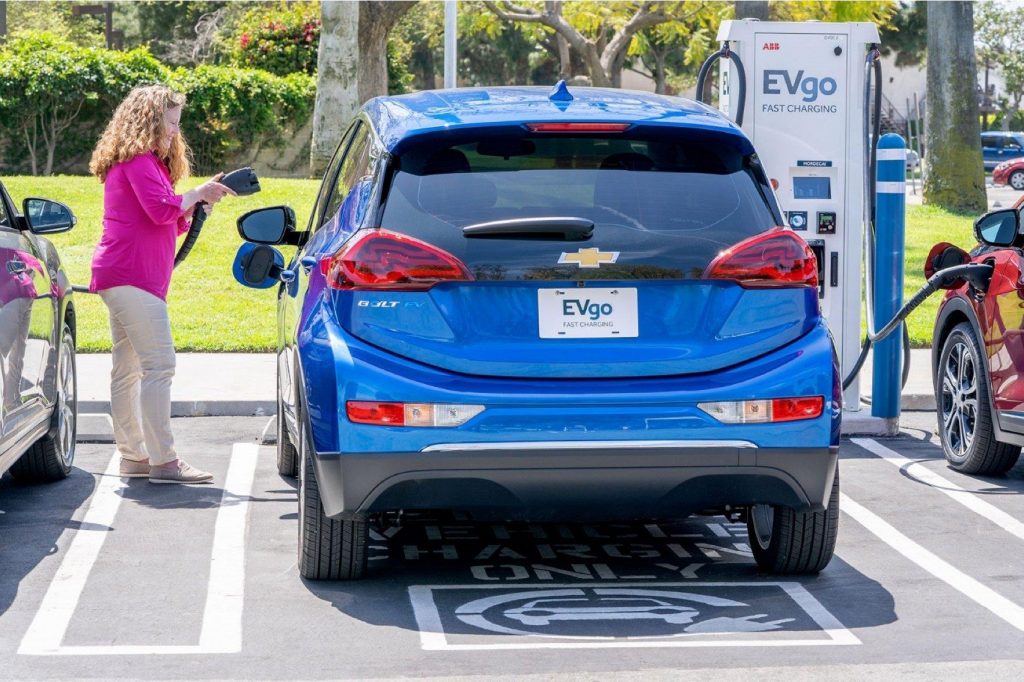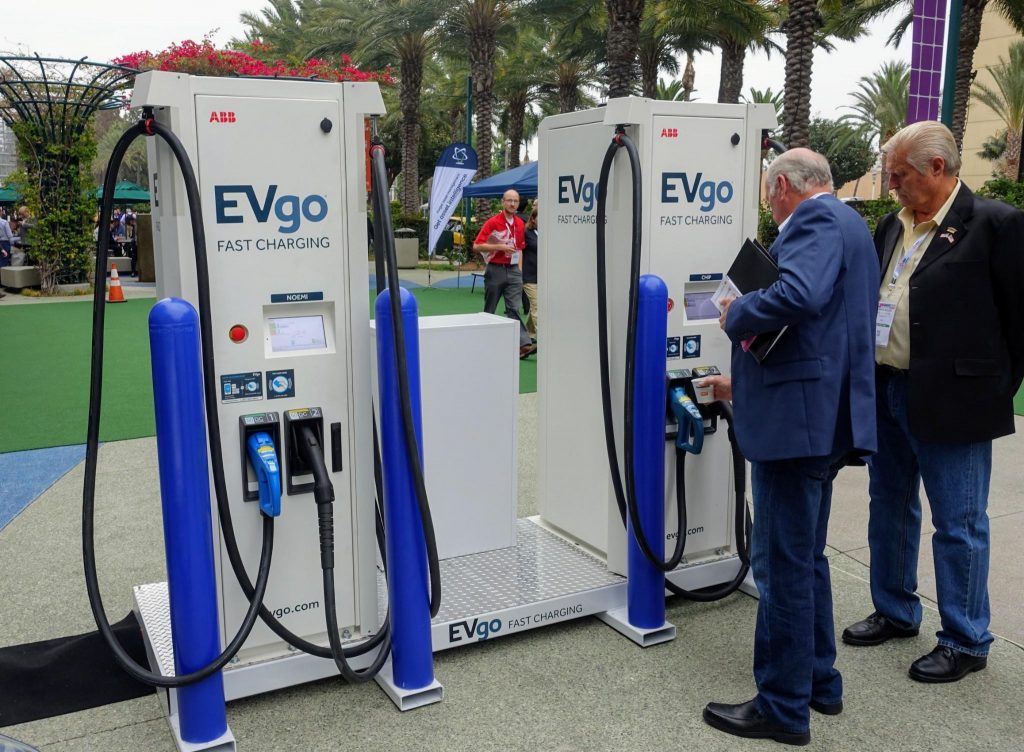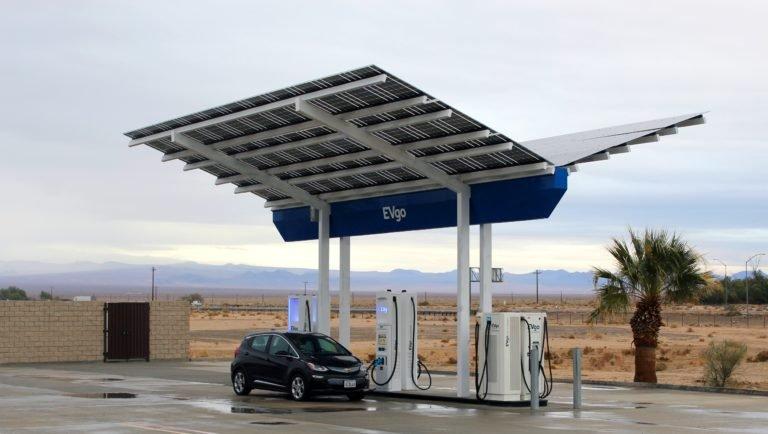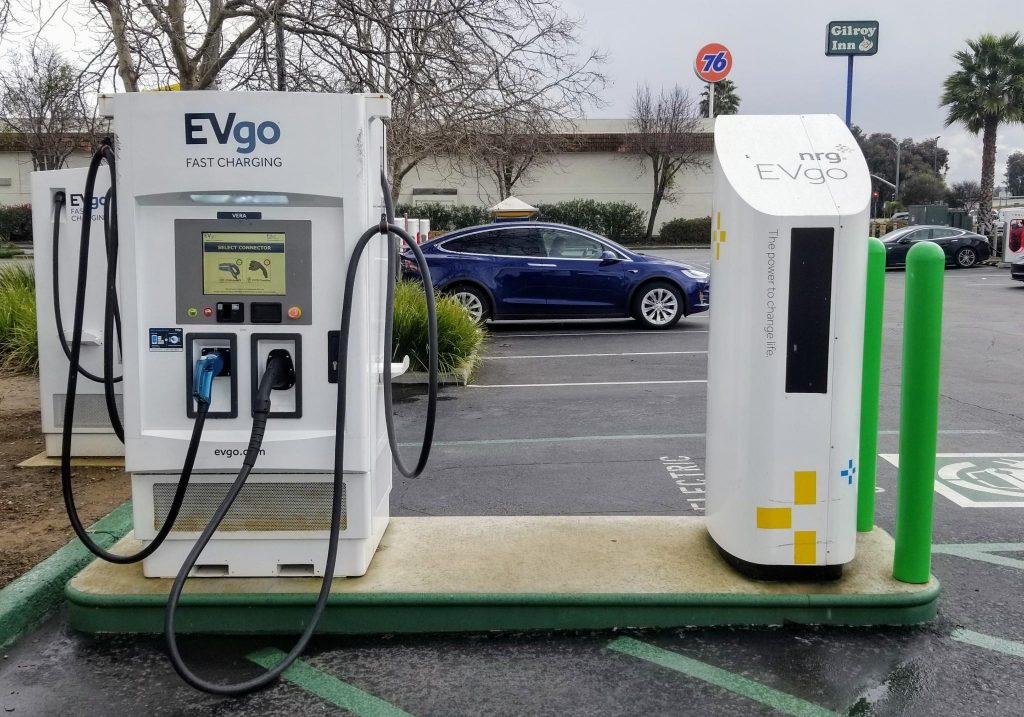EVgo has become the first EV charging network in the United States to contract 100% of the energy needed to power its customers with renewable energy this week. This was made possible thanks to a host of new renewable energy purchase contracts and Renewable Energy Credit purchases that all of the electricity consumed by customers on its charging network directly support renewable energy generation.

Doing The Right Thing Because It’s The Right Thing To Do
CleanTechnica spoke with Julie Blunden, EVgo’s Executive Vice President of Business Development, about the achievement and why it is such an impressive accomplishment. Right off the bat, Julie talked about how EVgo sourcing 100% of the electricity for customer charging from renewables was a priority because customers were asking for it. “What we find is that customers love driving electric vehicles,” Julie told me. “They appreciate the lack of tailpipe emissions, the lack of smell,” and that the only remaining gap in the electric vehicle ownership experience was the emissions from charging. With the move to 100% renewable electricity, “we are enabling that full transportation electrification transformation.”
“We’re very fortunate to have a leadership team that’s unified in our commitment to ensuring that we have a 100% renewable charging fleet,” Julie told me. “We got there in Q1 for the majority of our GWh and we hit the rest in Q2.” After securing the necessary agreements, EVgo announced the commitment to the Renewable Energy Buyers Alliance (REBA), a community of renewable energy buyers that work together to bring more renewables onto the grid over time. “Some of the largest companies in the country have made a decision to use 100% renewable energy moving forward,” and EVgo is proud to join the ranks of sustainable companies.

Piecing Together A Puzzle
Sourcing 100% of the electricity that is fed into customer vehicles from renewables gives customers the assurance that their end-to-end transportation experience is as responsible and as sustainable as possible. EVgo accomplished this feat by piecing together a complex puzzle of Green-e certified wind and solar energy from electricity suppliers, and where direct purchases of Green-e electricity are not available, purchase Renewable Energy Certificates (RECs).
RECs represent the renewable portion of electricity generated from renewable sources. They are akin to buying the premium price paid for renewable electricity right off the top, without being tied to the actual kilowatt-hour being generated. Purchasing RECs is not the ideal solution, Julie said, but it does create demand signals in the market that renewables are preferred and funnels money to renewable electricity generators.
In California, where renewables already represent a large percentage of the grid mix, EVgo is procuring 100% solar RECs, with plans to purchase bundled renewable energy from its partners as they achieve certification through the California Air Resources Board Renewable Energy Pathways program.
A Lower Cost Renewable Future
On the customer side of the equation, the move to 100% renewables gets even more exciting. Julie admitted that, “RECs do cost us money and buying a full renewable product does cost us more today.” But sourcing all of its electricity from renewables and buying RECs to shore up the gaps didn’t happen overnight. “We contemplated 100% renewable in the middle of last year, so when we set our pricing for this year, we built that in,” Julie said.
Putting all the marketing spin away, achieving 100% renewable for all customer charging really is just the beginning of a much more exciting relationship between EV charging and daytime solar generation. Even talking over the phone, I could tell Julie was excited by something. She leaned into the conversation and told me that, “there’s a huge gap in knowledge about what charging curves actually look like on an aggregated basis.” I expected that she was going to dive into the opportunity to push into Level 2 workplace charging stations as a means of soaking up all of the daytime excess solar generation, but she was clearly still talking about EVgo’s DC Fast Charging.

“One of the things that’s super fascinating is that if you look at where people like to charge, they like to charge in the middle of the day. More so than you might think. You might think that people don’t use fast charging in the middle of the day and they only charge on the way home from work, but that’s not true. It’s not even close to true.” In a state like California, where solar is pushing the hump of the infamous electricity consumption duck curve down into the negative in some cases, shifting loads to the middle of the day is key. The crazy thing is that, as Julie shared, this was almost happening by itself.
“If you look at our ride share drivers in particular, which was huge, it was about one third of our gigawatt-hours last year, it’s super interesting,” she said. “Because not surprisingly, ride share drivers don’t charge hardly at all during rush hour, because that’s when they want to drive.” That unique need created a glut of demand for electricity on EVgo’s DC Fast Charging network where California needed it the most: in the middle of the day. “It turns out that the load profile of our ride share drivers and the curtailment profile of solar in California is so ridiculously congruent that you’d think I made it up.”
What this translates to is that not only is Level 2 workplace charging a great way to shift EV charging demand into peak solar hours, but the ride sharing economy is also doing this on DC Fast Charging network, like EVgo’s. That’s the type of organic pairing energy nerds and virtual power plant operators dream of while on vacation, and it’s just happening here, by itself on the EVgo network. Let’s do this!
Growing Demand
Bolstered by dozens of new plug-in vehicle offerings like the Hyundai Kona EV, the Kia Niro EV, and the new longer range Nissan LEAF, EVgo is growing rapidly. Why not the top selling Tesla Model 3? That’s a story for another day. Last year saw an increase in the electric miles driven by EVgo users of 88%, up to 75 million miles per year.

Julie told me that they are currently installing 2 or 3 new DC Fast Charging stations per week as the network grows right alongside new EVs hitting the roads all across the country. As people shift to EVs, they are eager to clean up the rest of their transportation emissions footprint and, “there’s a strong customer preference for renewables.”
The future is electric. The future is now.
